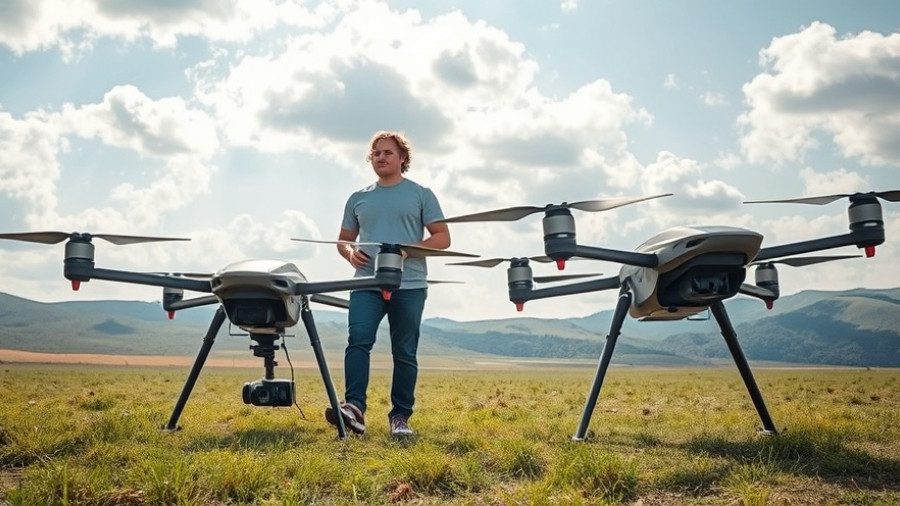
Advancements in Drone Technology Combat Wildfires
In the wake of devastating wildfires, innovative solutions are needed more than ever. A new startup, Seneca, has recently launched its high-tech wildfire-fighting drones, backed by a $60 million investment, to tackle this crucial challenge. Founded by Stu Landesberg, the company is focused on improving fire response capabilities in wildfire-prone regions, driven by the urgency of our changing climate.
Background: A Growing Crisis
Wildfires have dramatically increased in frequency and intensity, burning eight times more land in the U.S. West compared to the mid-1980s. In California alone, 4.3 million acres burned in 2020, impacting countless communities and raising concerns over fire insurance availability. Landesberg, who experienced personal losses due to wildfires, emphasizes that the risk is now a reality for over 100 million Americans. Understanding these alarming trends is crucial for communities and business owners as they seek to mitigate risks associated with wildfires.
Revolutionizing Fire Response with Drones
Seneca's drones are designed to autonomously navigate to wildfire locations and suppress them by spraying specialized firefighting foam. Operating in strike teams, these drones can cover significant areas more quickly than traditional helicopters or firefighting crews. Their unique capability allows them to target specific fire hotspots effectively, delivering a new, cost-efficient option for fire response agencies.
Collaboration and Testing with Firefighters
With input from fire agencies across the country, Landesberg and his team have developed prototypes that incorporate feedback from those on the ground. The integration of firefighter perspectives ensures that the drones are not just technologically advanced but also practical in real-world scenarios. This collaboration represents a significant development in firefighting technology and reflects a growing willingness within the firefighting community to embrace new solutions.
The Economic Impact of Wildfires
Wildfires inflict severe economic damage, costing the U.S. economy about a trillion dollars yearly, from lost property values to increased insurance premiums. The urgency to innovate in firefighting resources is not solely about public safety; it encompasses the economic stability of communities facing these threats. As such technologies are adopted, they can reduce losses and potentially save lives.
What Does This Mean for Businesses?
For small and medium-sized business owners, especially those in the service industry, understanding these advancements is an opportunity for strategic growth. Investing in wildfire prevention technologies not only enhances safety but could also safeguard business resources against disruptions brought on by natural disasters. Awareness and preparation will be essential for thriving in a climate-volatile landscape.
As society confronts the realities of climate change and increasing wildfire threats, innovations like Seneca's drones illuminate the path forward, fostering a proactive approach to fire management. For any business, staying informed about such technological developments represents not just a chance to adapt but an opportunity to lead in resilience and sustainability.
 Add Row
Add Row  Add
Add 










Write A Comment